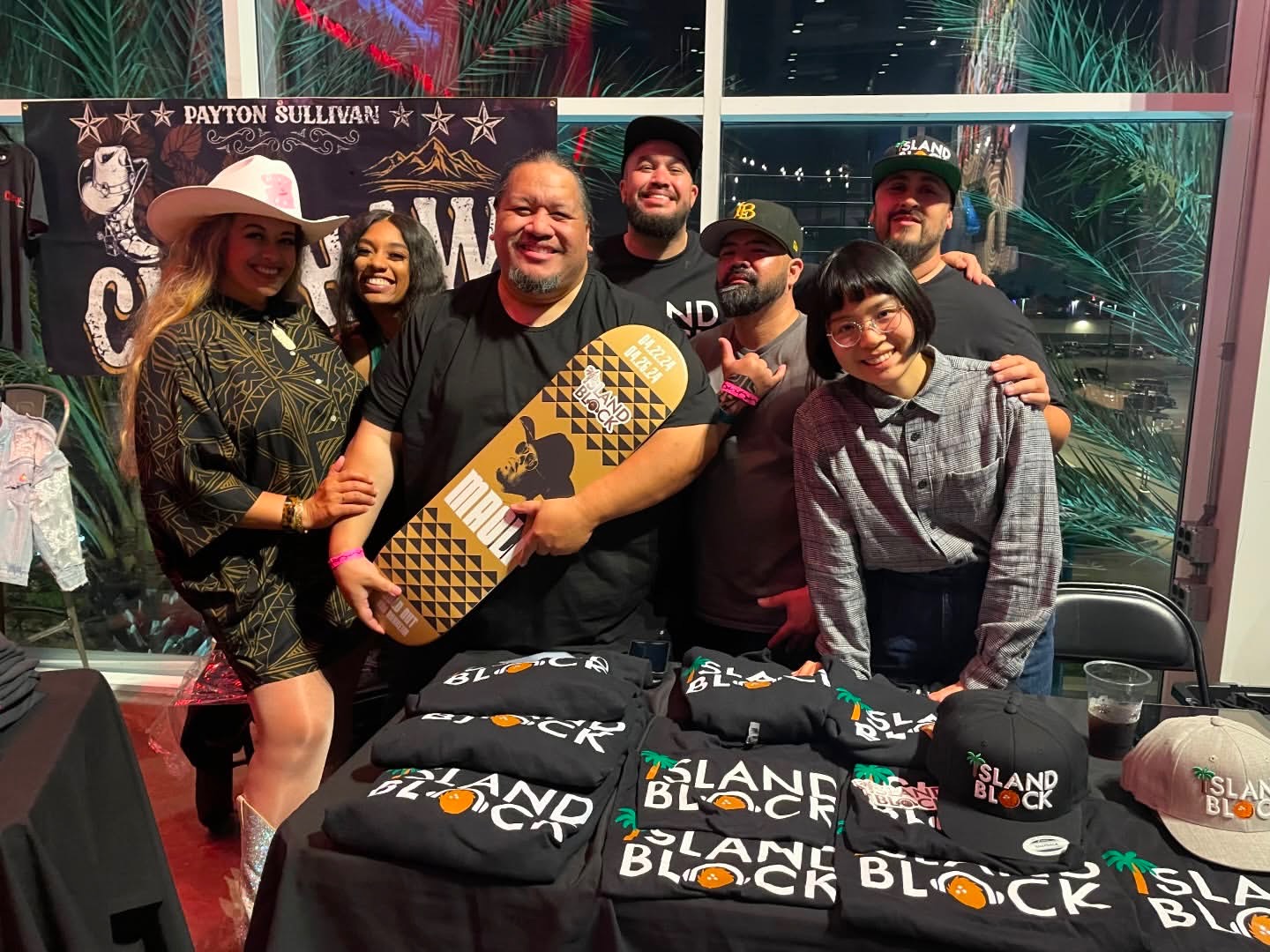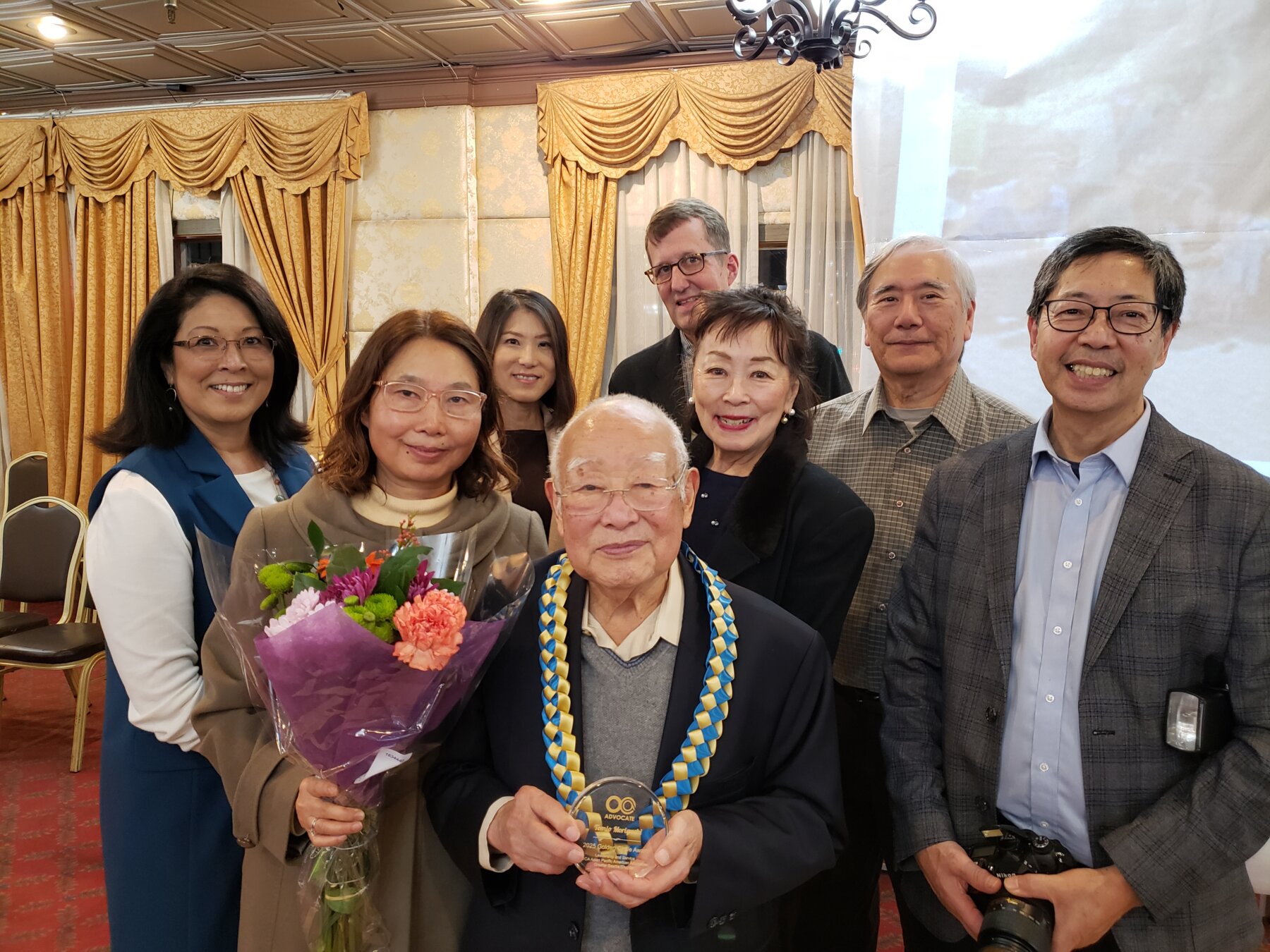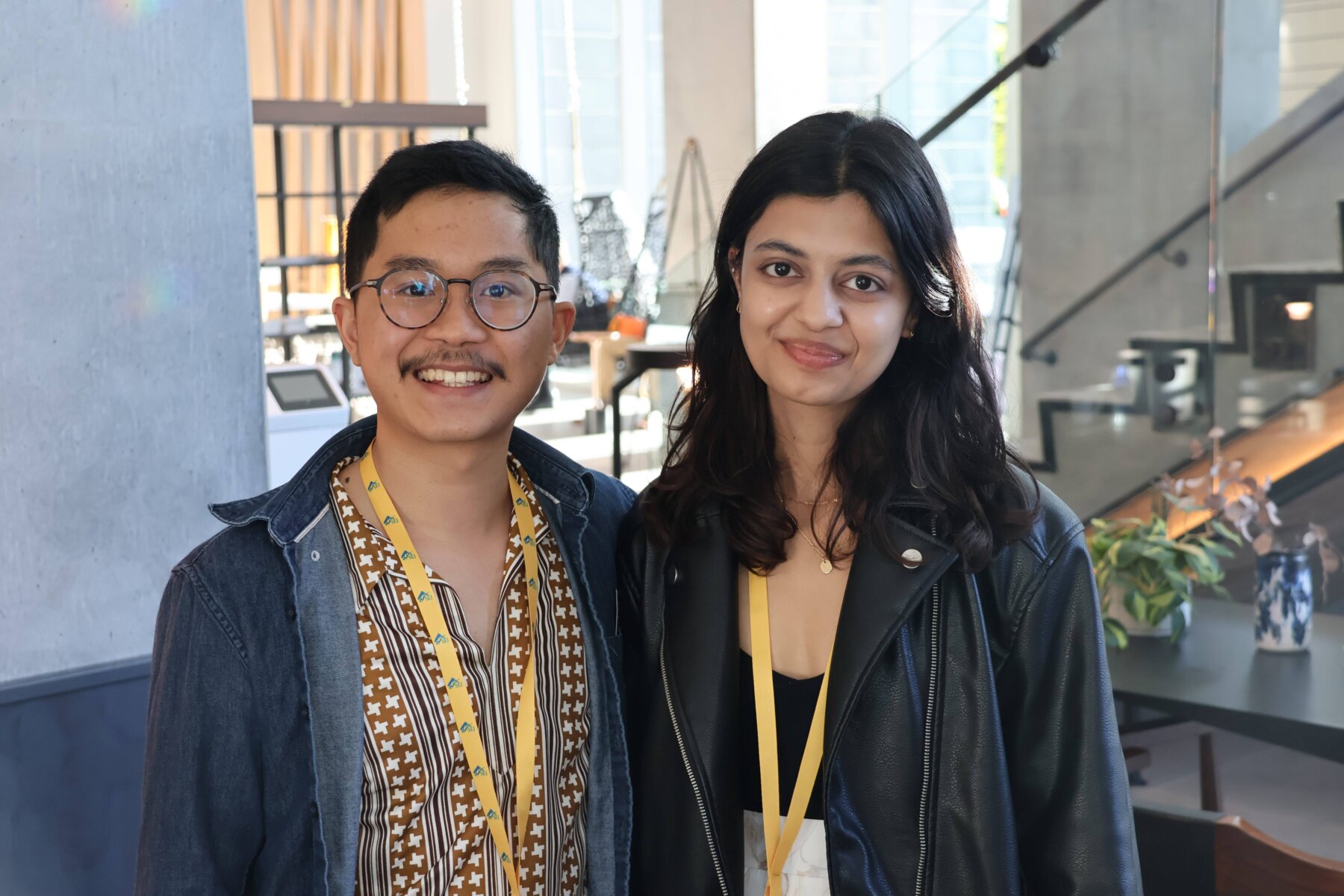
A decade ago, South Los Angeles educator Joe Fa’avae and his then-business partner were approached with an opportunity to reach their Polynesian community: Would they want to start a radio show?
They said yes, and their show eventually grew into Island Block Network, an internet radio station that primarily plays Pacific Islander artists and produces a podcast and live events. It’s one of the few digital radio platforms for Pacific Islanders, reaching over 5 million listeners worldwide during its pre-pandemic peak.
“We didn’t know what it was in the beginning,” said Fa’avae. “The only thing we could model it after was stuff that we listened to on the regular, but it had nothing to do with our community. Once we were able to build Island Block, we brought in content that really connected to our community.”
Reaching Asian American and Pacific Islander communities is no small business. Nearly 700 AAPI-specific media outlets operate across the U.S. and Pacific Islands, according to an AAPI media directory compiled by the CUNY Newmark Graduate School of Journalism’s Asian Media Initiative.

“Asian communities are so diverse and so poorly understood,” said AMI director Kavitha Rajagopalan. “Asian American history, which is really central to American history, has been invisibilized and erased. And our communities are not necessarily in solidarity or in networks with each other.”
The directory project launched amid the rise in violence against Asian Americans during the pandemic, when Rajagopalan noticed a disconnect between mainstream media outlets and AAPI-centered publications.
“Mainstream media couldn’t speak to them, gain their trust, gain access or understand how to document these [acts of violence]. The majority of Asian Americans were not going to report these issues to the police, so they had difficulty defining hate,” she said. “Meanwhile, community press were really jumping into the breach and were serving these communities that were dealing with pervasive fear.”
Today, many of these publications cover stories beyond violence and discrimination, from science news to entertainment and music. I spoke with six AAPI-focused publications in honor of AAPI Heritage Month to see how they’ve grown and what’s next.
The first radio station for Pacific Islanders: Island Block Network
What started as a passion project in 2012 turned into Island Block Radio in 2015, hosted on the digital platform Dash Radio. Through building trust, Fa’avae gained interviews with celebrities like Dwayne “The Rock” Johnson, Wyclef Jean and Auli‘i Cravalho.
“It was just surreal, because it hadn’t been done before,” Fa’avae said. “We were able to bring in content that really connected to our community and we wanted to cater it to this demographic that didn’t have anything at the time.”
Island Block Network is now independently run by Fa’avae, who has moved the station’s live events, like the Samoan Heritage Festival, from Hollywood to Carson — a Samoan community and his hometown. Fa’avae is also working on nonprofit status for the organization and its next big project, a short film. “I think the future is pretty endless with regards to not only what we can do with the live events, but diving into more community-driven things,” he said.
The longest-running site for Asian American women: Mochi Magazine
In 2008, Mochi Magazine started as a volunteer-run online publication for Asian American teen girls, covering fashion, makeup and stars like Brenda Song. But its content grew up as its audience did — especially during the 2020 George Floyd protests and 2021 Stop AAPI Hate movement.
Now, Mochi’s articles are aimed at Asian American women broadly, embracing their experiences in its Our Voices section and in first-person narrative pieces.
“Just being Asian American in 2024 is political,” said editor-in-chief Giannina Ong, “but I also like to think that we still stick to our roots and we find joy in our identities by covering things like entertainment, too. We’re just trying to create a soft landing place for folks.”
These days, Mochi has its eyes on developing the next generation. In recent years, Mochi has run remote, paid college internships focusing on writing and reporting meaningful stories, including reconnecting with a parent as a second-generation Hmong American and racial identity as an Asian adoptee.
“We’ll walk them through every step in the process so that they better understand how to interview, pull together data and do storytelling in a way that’s impactful,” Ong said. “The stories that they write are really amazing because they’re doing the groundwork and interviewing people in their communities.”
The oldest Japanese American newspaper: North American Post
Founded in 1902, The North American Post focuses on Seattle’s population of Japanese immigrants. The newspaper has seen the community through the incarceration of Japanese Americans during World War II and becoming the Emerald City’s largest minority population in the 1990s. Today it covers local celebrations, community events and cultural interests like anime and manga.

“It really is presenting the first draft of Japanese American history, right from the very first immigrants all the way to today,” said general manager Bruce Rutledge. “Fifty years from now, people can read our paper of today and see and get a really good feel for what the community was like, what the challenges are and what the celebrations are.”
Published in English and Japanese, The North American Post now has a web presence and a second Japanese-language publication called Soy Source, aimed at the Japanese expat community. But older community members still look forward to the newspaper edition.
“If there’s a hiccup in delivery and the paper is a day late, we start getting complaint calls from people asking, ‘Where’s the paper?’” Rutledge said. “I take it as a good sign that they care, especially because the community is no longer geographically connected. They’re all over Seattle, so this paper kind of pulls them together.”
The only AAPI science publication: The Xylom
As a Georgia Tech undergrad, Alex Ip created The Xylom, a publication covering science, climate and environmental stories impacting AAPI people across the world — from the effects of aging Japanese electric vehicles in Africa to urban farms helping with food insecurity in Jakarta, Indonesia.

After he graduated and received some funding, the science outlet hired its first paid employee in 2023, managing editor Rhysea Agrawal. Now, The Xylom has four paid employees and a roster of 20 regular freelancers worldwide covering issues like eco-friendly sun dryers for fish in India and China-funded mines in Zambia’s copper belt. Stories are also published in the languages of the countries they’re about, in order to increase accessibility.
“We try to get freelancers from that region, ideally, who can write those stories and publish those stories to hit that global angle,” Agrawal said, “but we also want to make sure these global stories are local somewhere.”
This approach has been successful with a young newsroom and an engaged Gen Z audience, which has tripled over the past two years and surpassed 16,000 followers on Bluesky.
“We’ve gotten a lot of encouragement from people our age saying, ‘This is stuff that we actually want to read,’” Agrawal said. “They like that we’re bringing international stories to the United States and trying to find how stories from Africa can be connected to what’s happening here in the States. These aren’t international issues only, but also local issues.”
The source for mainstream AAPI news: NBC Asian America
Launched in 2014 as a vertical of NBC News, NBC Asian America covers breaking news, trends and features, while uplifting AAPI voices in the entertainment and culture spaces. In the past week alone, reporters have tackled human smuggling in Florida, profiled the WNBA’s first Asian American head coach and explored how the fall of Saigon still resonates today.
“We often think of stories about communities of color as being sidelined, siloed or in their own court,” said Jessica Prois, editorial director of NBC Asian America. “The way that NBC does it, we have the freedom to do a deep dive based on identity and our cultural expertise, but we also break news, get exclusives and scoops.”
Over the past decade, the vertical has gained a loyal readership and engaged social media following, with over 50,000 Instagram followers. Some days, its stories boast the largest audience numbers on NBCNews.com.
“So much of the coverage we do just wouldn’t be done in these newsrooms if we weren’t making the case for these stories,” she said.“Making connections with sources, finding the identity-based stories and turning the stuff from group chats into a trend piece — no one’s better equipped to do that than our reporters who focus on these communities.”
The expanding multimedia platform: JoySauce
In the early 2000s, Jonathan Sposato was a tech entrepreneur, famously selling his companies Picnik and Phatbits to Google. He then pivoted to journalism, co-founding the technology news site GeekWire and owning two Seattle-based magazines. But out of all his successes, JoySauce has meant the most to him.
Sposato founded the vibrant, unapologetically proud AAPI multimedia platform in 2021, hosting a roster of podcasts, articles and video series that have garnered recognition from GLAAD, the Center for Asian American Media and The Telly Awards.
“My goal for JoySauce is to actually have it not just be incredibly resonant with the Asian American community, but also with the general market,” said Sposato. “For people to take a second look and say, ‘There’s a lot of really cool stuff culturally, intellectually, going on within the Asian American community.’”
Sposato takes great pride in JoySauce’s bold, colorful and fun aesthetic — partly inspired by photographer Michelle Watt’s “Icon of the Year” Time cover photo of Michelle Yeoh — and showcasing AAPI talent that other AAPI media isn’t covering, such as award-winning transgender filmmaker Isabel Sandoval and up-and-coming AAPI comedians like Jenny Tian.
“We make a point of focusing on even marginalized segments within the AAPI community,” he said.
Later this year, JoySauce plans to launch an all-Asian American TV channel featuring original programming and other works acquired and licensed from AAPI filmmakers. As the platform grows, Sposato hopes JoySauce encourages the next generation to be creative, including his 15-year-old son.
“It was really important to me that someday, as a young person, he would have something like JoySauce to look at, as something that might inspire him,” he said.



